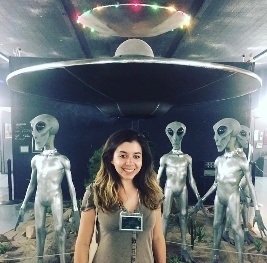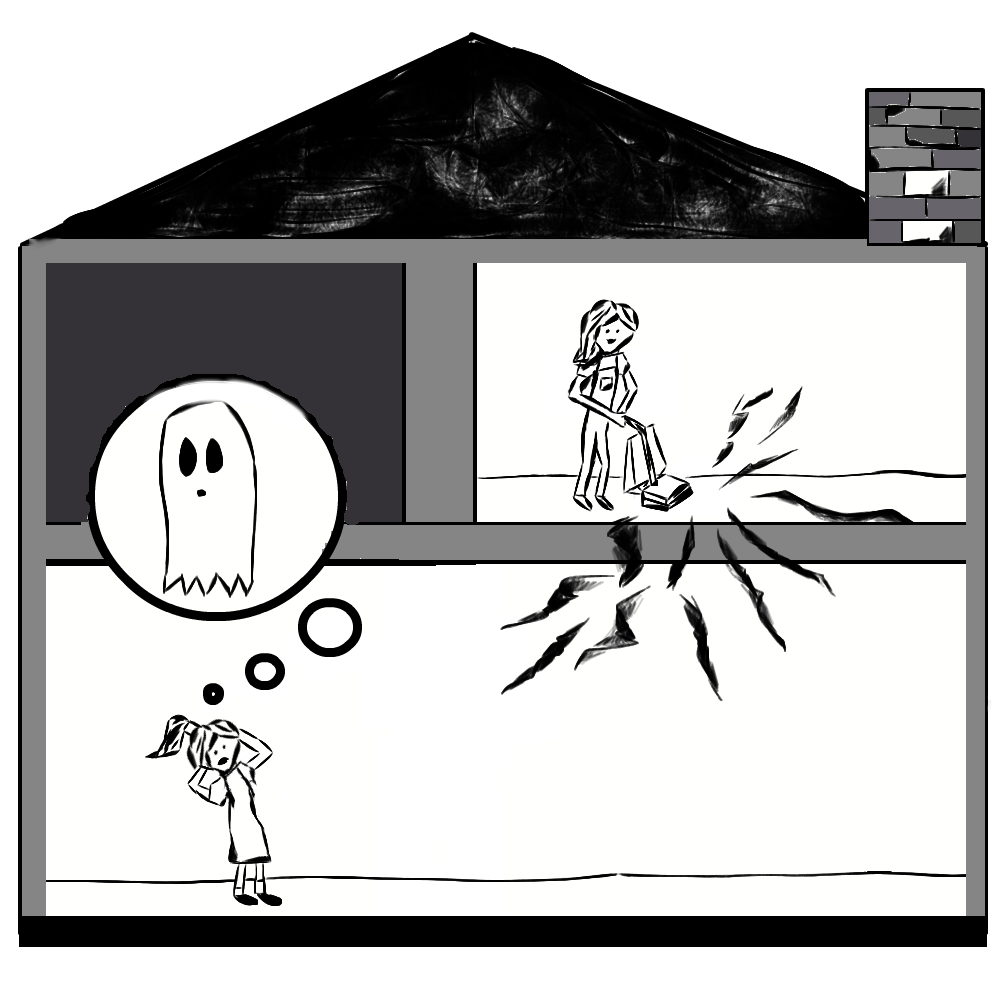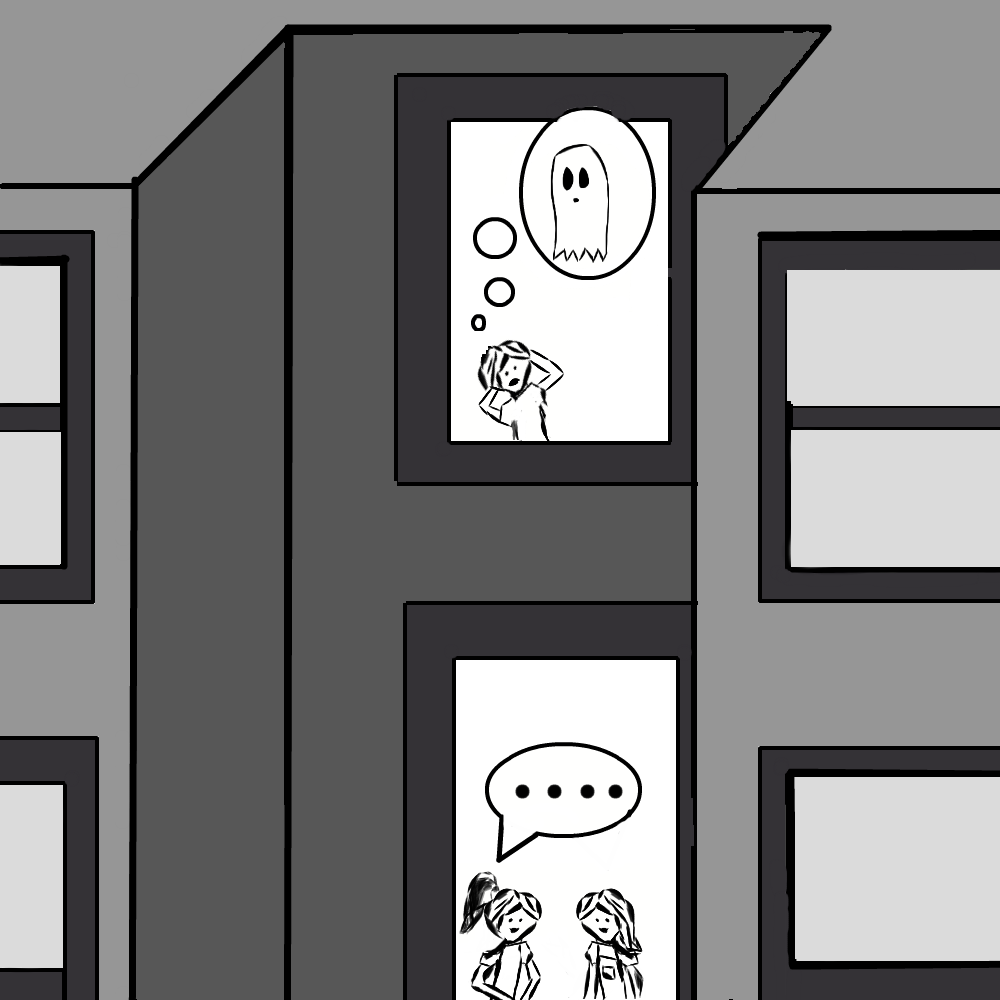
My favorite novel to read around the Halloween season is Stephen King’s It. A common misconception about the book is that “It” is just a scary clown — It is actually the embodiment of whatever you fear most. If what scares you the most is the possibility of ghosts, don’t worry: a researcher used acoustics analysis to explain that whatever scares you this Halloween, like It, is just a trick of the mind (and vibroacoustic effects…)
What Is a False Poltergeist?
I’m going to assume that the engineers, physicists, scientists, and researchers who read the COMSOL Blog don’t hold much stock in the paranormal. Even so, hearing a rattling window in the middle of the night or a whispering noise in an empty house is enough to frighten even a seasoned analytical mind.
When a scientist debunks a suspected poltergeist (a supernatural entity that causes physical disturbances), it is known as a false poltergeist. Researchers in this line of work often refer to Occam’s razor to explain these occurrences, as it states that the simplest explanation for something is likely the most valid. For instance, the Roswell UFO incident in 1947 can be explained most simply by a weather balloon that fell out of the sky, not a flying saucer flown by little gray aliens.

Weather balloon or aliens: Which explanation do you think is the most valid? (Photo from my 2016 visit to the International UFO Museum and Research Center in Roswell, New Mexico.)
Explaining False Poltergeists with Vibroacoustics
In the article “Things that Go Bump in the Night: The Physics of ‘False Poltergeists'” from a past issue of Sound & Vibration magazine, Roman Vinokur discusses common vibroacoustic phenomena that are mistaken for ghosts and supernatural entities. Let’s put on our ghost hunting/acoustician hats and take a look at some of the examples featured in the article.
Is It Haunted or Helmholtz?
If you ever wake in the middle of the night to a rumbling or groaning sound, think about Helmholtz resonance before burning sage or calling a medium. The most basic example of a Helmholtz resonator is a glass bottle with a narrow opening. When you hold the bottle up to your lips and blow perpendicular to its opening, it makes a humming sound.
Helmholtz resonance in action (turn up your sound!)
A room with an open window or door can also act as a Helmholtz resonator. When turbulent airflow passes through an opening in the room, it excites Helmholtz resonance. The natural frequency of Helmholtz resonance depends on the room’s volume, thickness of the walls, and area of the opening. If this value falls within the range of infrasound (below 20 Hz), it can cause creepy sounds in the audible range — perhaps leading to a suspected poltergeist.
Infrasound can even vibrate our internal organs. This explains why people who recount paranormal experiences often describe feelings of nausea; anxiety; and most commonly, coldness.
Helmholtz resonance can be excited by sound waves propagating from an internal or external noise source. For example, thunder can reverberate in small rooms, which can be perceived as something more malicious than weather. The Sound & Vibrations article mentions a building that was rumored to be haunted. In actuality, the only thing haunting the building was revenge. The workers who built the apartment were scammed by the owner who hired them. To get revenge, the workers embedded empty glass bottles in the building’s roof. The bottles acted as Helmholtz resonators and wind passing through their openings at night caused tenants to hear roaring sounds at a frequency of 100 Hz.
Besides causing scary sounds, Helmholtz resonators also reduce noise in a wide range of applications. For instance, resonators are used in car exhaust systems because they can attenuate a specific and narrow frequency band. When a mean flow enters a typical exhaust system, a Helmholtz resonator attenuates the sound that is generated (similar to our bottle example above, but with the opposite effect).
An animation showing the pressure distribution for a Helmholtz resonator under certain operating conditions. Automotive designers often turn to acoustics modeling and analysis to evaluate how the presence of flow affects the Helmholtz resonator’s performance.
Learn about modeling aeroacoustics applications with the COMSOL Multiphysics® software in a previous blog post by my colleague Mads Jensen.
Noisy Ghosts or Mechanical Resonance?
Watch any film about a haunted house (if you’re not sure where to start, I can recommend a few!) and there is a scene with creaking floorboards, rattling windows, doors that open and shut on their own, or some combination of phenomena. In the movies, a ghost is to blame, but the actual cause of such movement and noise isn’t as insidious, but instead due to mechanical resonance.
When the frequency spectrum of the source of a vibration lies in the infrasound range, it is inaudible (or barely audible) to the human ear. However, the movement caused by the vibration source is easy to hear. Basically, you can sometimes hear the effect of a vibration, but not the cause. This discrepancy is where ghost stories are born.

These roommates have very different explanations for what’s causing the rattling noises between the first and second floors.
Going back to the example of a multistory building, rooms often contain equipment that moves or vibrates. Objects ranging in size from vacuum cleaners to air conditioning units to treadmills can cause noise on another level of a building. If a person hears the noise produced by vibrations but is too far away to hear the cause, they could suspect that a paranormal entity is afoot.
Whispering Spirits or Attenuating Sound?
The way skyscrapers are arranged in cities can sometimes form street canyons, also called urban canyons, which manipulate sound propagation. The canyon effect neglects sound absorption in air and solid surfaces. When propagating in a canyon, a sound wave’s energy does not follow the usual distance law valid for open spaces (6 dB attenuation for each doubling of the distance, a spherical wavefront). In a canyon, the pressure amplitude decreases inversely to the square root of the distance from the noise source. So instead, for every doubling of the distance traveled, the energy is attenuated by only 3 dB (a cylindrical wavefront). Thus, sound can propagate over longer distances in canyons with less attenuation than in open environments.
Let’s say our multistory building has a wall canyon. (You can picture a wall canyon as the cutout center of a U-shaped building, sometimes called a courtyard building.) If a conversation is happening on a lower level of the building — in front of open windows, of course — the canyon effect causes the sound to propagate to a higher floor. The person on the upper level hears the conversation as if it is happening close to them, but don’t see anyone talking. Therefore, the wall canyon causes the perceived effect of the hushed whispers of a ghost.

Due to the canyon effect, the conversation in front of an open window does not have the original low frequency when it reaches the open window a floor above.
Interestingly, negative temperature inversion can also produce something similar to the canyon effect. For instance, at night, the temperature of the ground cools faster than the air above. This causes sound to propagate for longer distances because of multiple reflections from the ground. What could possibly be scary about this effect, you ask? Perhaps hearing an owl hoot when there are no owls or trees around for miles…
This acoustic effect can be studied using ray acoustics and the propagation in graded media functionality. It is commonly studied in the field of underwater acoustics, where waves propagate in underwater sound channels generated by temperature or salinity gradients in the water column.

Owls are often seen as ominous, but aren’t they cute?
The Simplest Answer or the Most Fun?
Let’s go back to Occam’s razor: The simplest explanation is usually the truth. As we’ve discussed, supernatural and paranormal experiences can be explained simply via acoustics and vibrations. But maybe the explanation is even simpler.
Say you’re alone in the house and hear footsteps on the floor above you. Is it a ghost? Alien? Infrasound from the layout of the room? It could just be a roommate or family member who had a change in their schedule and happens to be walking around upstairs when you don’t expect them to. What about noticing a quiet pitter patter while taking a walk outside? It’s probably not a ghost. It could be sound attenuation from the canyon effect. Or, it’s simply a cat out exploring the neighborhood — although if it’s a black cat, I’d still take precautions.
When Truth Isn’t Stranger than Fiction
COMSOL’s main office is located north of Boston in Massachusetts. In the southeastern corner of the state, there is an area known to paranormal enthusiasts as the Bridgewater Triangle (a reference to the area’s epicenter, Bridgewater, MA; and the Bermuda Triangle). The area is a hotbed of reported ghosts and UFO sightings as well as other bizarre forms of paranormal activity, like the pukwudgies, tiny creatures who supposedly live in the woods and play tricks on hikers.
Although I used to be wary of venturing to the Bridgewater Triangle and bumping into a ghost, learning about how vibroacoustic effects can cause seemingly supernatural noises has me ready to explore the area.
Further Reading… If You Dare
- Read another ghastly post from the COMSOL Blog:
- Check out the publications featured in this blog post:
- R. Vinokur, “Things that Go Bump in the Night: The Physics of ‘False’ Poltergeists,” Sound & Vibration, vol. 50, no. 4, pp. 14–19, 2016. http://www.sandv.com/downloads/1604vino.pdf.
- S. King, It, Viking, 1986.




Comments (0)